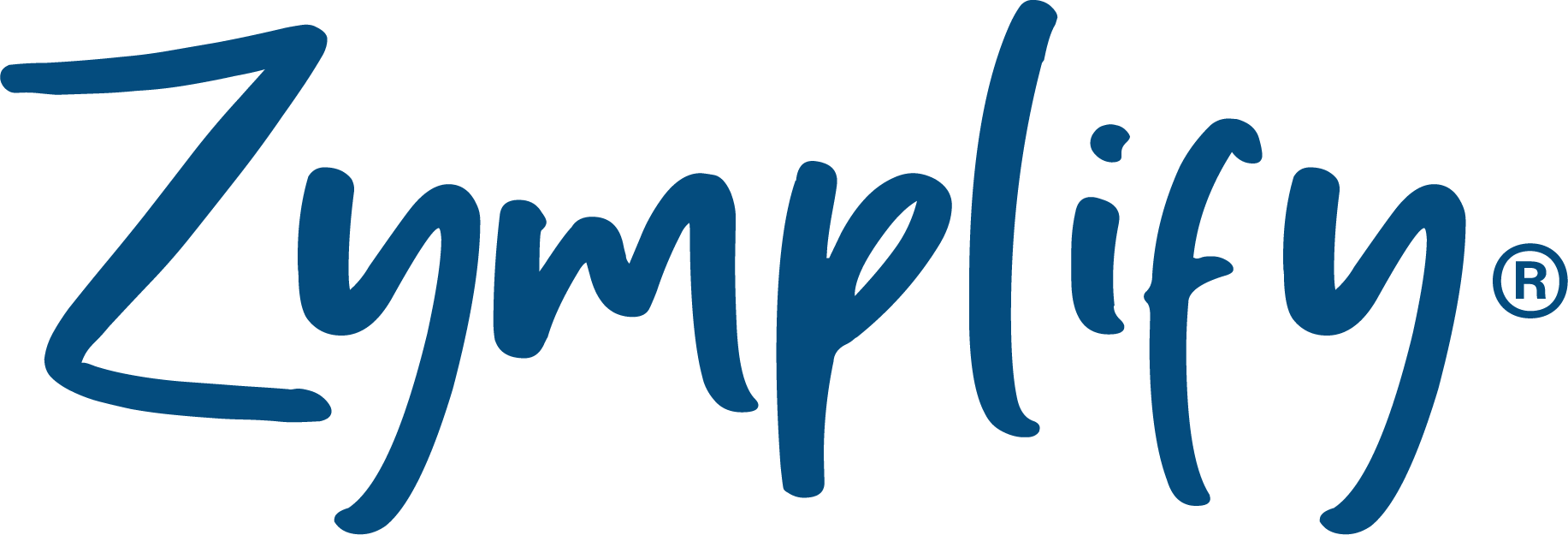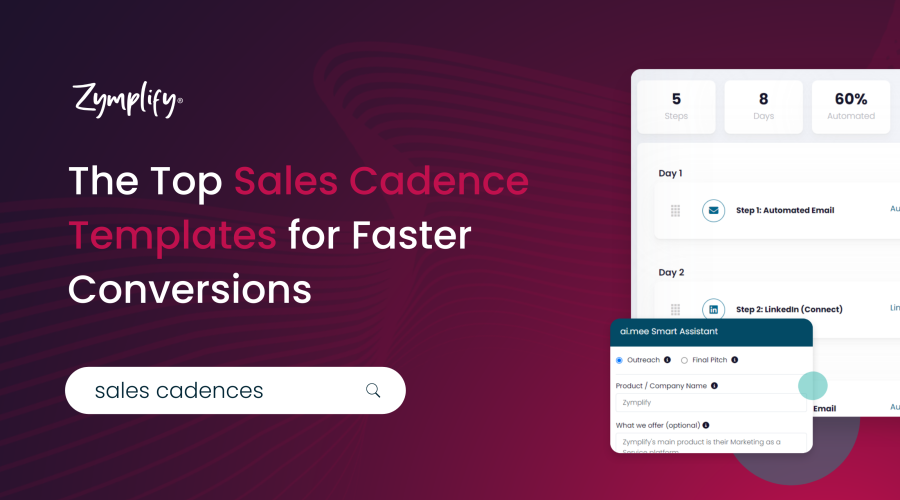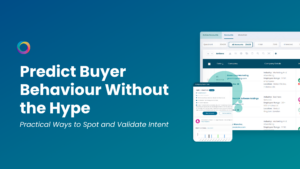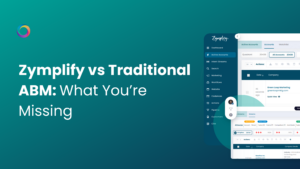63% of companies requesting information about your product will not purchase it for at least 3 months.
Developing sales cadences helps your sales team to accelerate conversions and increase revenue, faster.
If you’re new to the world of cadences, we understand you’re probably thinking, where do I start on mapping out a sequence? Keep reading this blog for 4 cadence templates to help you hit the ground running!
Understanding Sales Cadence
The purpose of a sales cadence is to schedule your interactions at strategic intervals to maximise the impact of your outreach and engage your prospects at the right time with the right message.
A tailored outreach, with up-to-date information on your prospects’ current stage of the buyer journey, will not only relay your awareness of their exact needs but make them more likely to engage with your organisation.
Consistency is considered the backbone of any successful sales strategy. By implementing sales cadences, sales teams can ensure uniformity across all their customer interactions.
A well-structured cadence can not only expedite the outreach process, but also plays a crucial role in converting hot leads into successful deals. Sales cadences offer a variety of channels to connect with prospects, comprising of emails, phone calls or even social media.
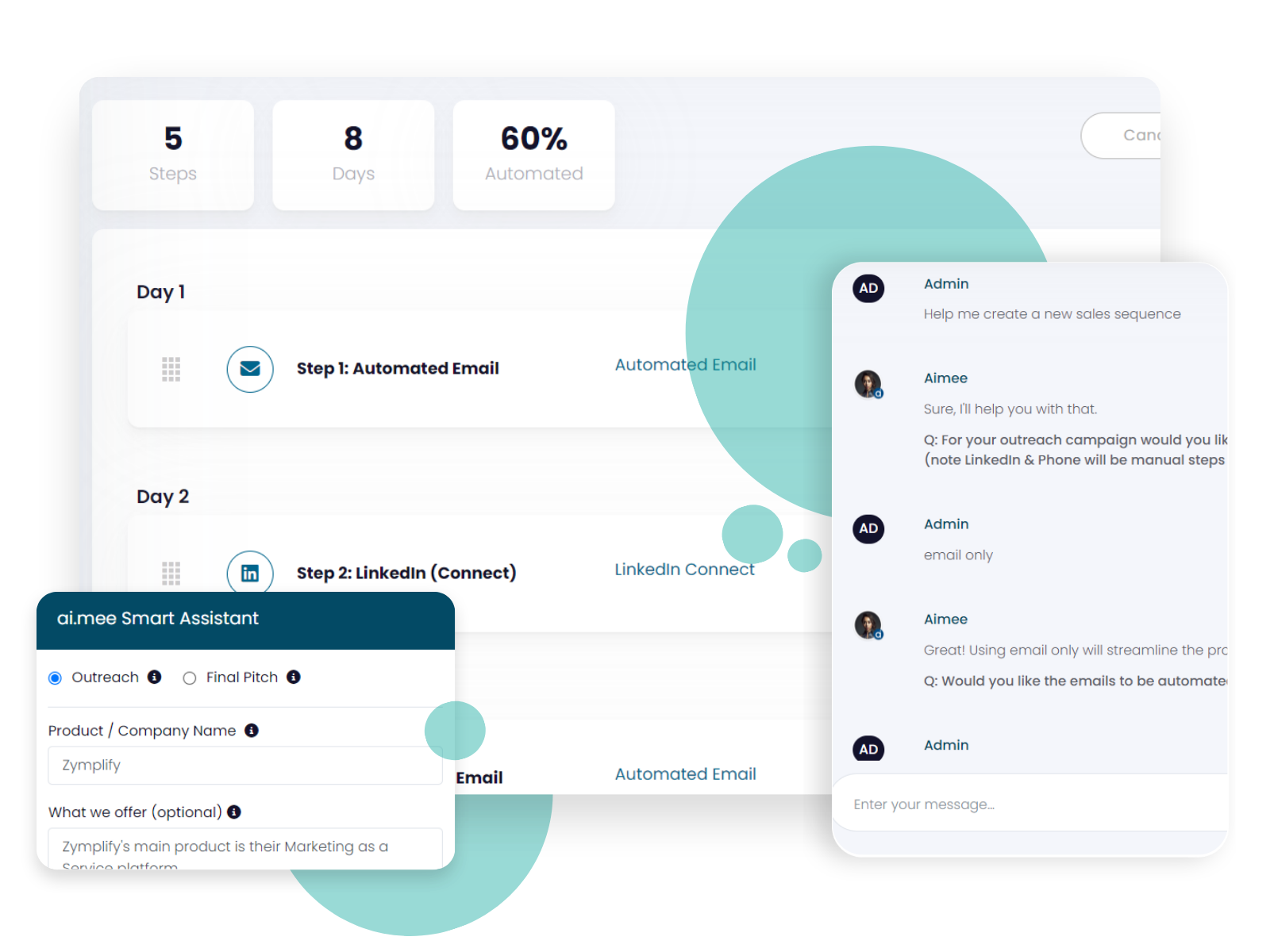
Here’s Four Top Sales Cadence Templates for Faster Conversions
1. Re-ignite Interest: The ‘Meeting No Show’ Cadence
Had a prospect miss a scheduled demo, despite their initial interest? Don’t worry, the ‘Meeting No Show’ cadence is your key to re-engage and keep the conversation going.
Kick-start the process with a courteous email or message. Keep the tone friendly and understanding, acknowledging their possibly busy schedule and express willingness to reschedule the demo at a convenient time for them.
Next up, reach out with a personal phone call. This direct approach drives home your eagerness and readiness to connect, offering assistance or information wherever needed.
Maintain the momentum with a series of strategically timed communications via emails, phone calls or social media messages. The idea is to subtly remind them about the value your solution offers, enticing them to reconnect when it suits them, all the while keeping your brand at the top of their mind.
Employing such a cadence structure drastically improves your odds of reclaiming seemingly lost opportunities, showing prospects that their interest is valued and that you’re ready to cater to their needs.
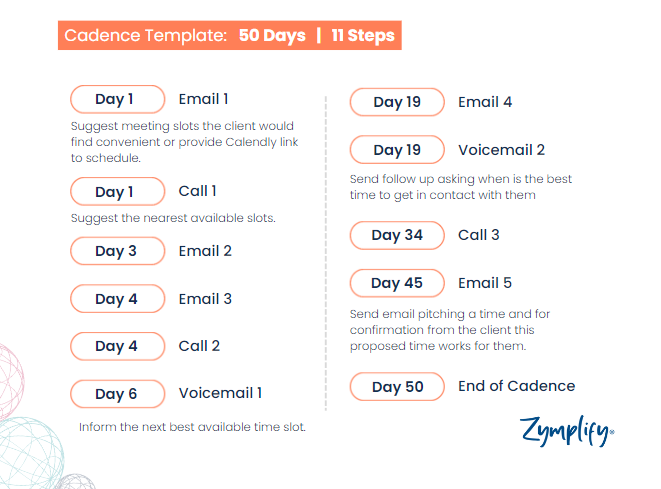
Five Top Tips for Creating a Meeting No Show Cadence
- Maintain a Friendly Tone: It’s crucial to keep your communications professional, cordial, and understanding.
- Suggest Rescheduling: Acknowledge that the missed meeting could be due to their busy schedule and offer alternatives for a rescheduled demo.
- Use a Variety of Channels: Use emails, phone calls, and Linkedin messages to keep the conversation diversified and engaging.
- Space Out Communications: Schedule your touchpoints over a few days or weeks to maintain a steady contact without being overwhelming.
- Emphasise Value: Remind your prospects of the value your solution brings and express your eagerness to reconnect.
2. Revive Communication: The ‘Post Demo Silence’ Cadence
Experienced a lull in communication after a product demo with prospects? The ‘Post Demo Silence’ Cadence is your strategic solution to re-ignite conversation, regain their interest and steadily guide them towards the next steps in their buying journey.
Start off by sending a personalised thank you email for their participation in the demo and suggest a convenient time for your next call or include a calendar link. The email should recap the standout features and key benefits of your that were covered during the demo. Subtly express your intrigue regarding their silence post-demo, keeping your tone professional and friendly, with an aim to prompt a response.
Follow up the email with a phone call. This direct interaction allows you to understand any queries, concerns or needs they might have encountered post-demo. It’s essential to listen to their feedback, answer their questions and assure them of your assistance in addressing any issues.
To ensure consistent communication, strategically placed follow-up emails and calls are recommended. These could shed light on your product’s features, use-cases, or how it meets the challenges specific to the prospect’s industry or business. Sharing testimonials or case studies from satisfied customers could also help showcase the value of your product.
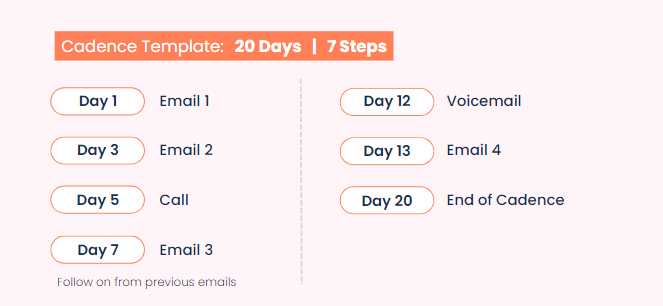
Five Top Tips for Creating a Post Demo Silence Cadence
- Craft Personalised Emails: Tailor your follow-up emails to the prospect, highlighting the key points covered in the demo.
- Prompt Dialogue: Encourage response by subtly expressing curiosity about their silence post-demo.
- Be Responsive: Address any queries or concerns promptly and assure them of your assistance.
- Provide Value: Send follow-up emails containing additional insights about your product and its application to their specific industry or business needs.
- Utilise Multiple Channels: Ensure a fluid communication flow by using multiple channels such as emails and phone calls.
3. Bolster Your Lead Generation: The ‘Prospecting’ Cadence
Looking to convert prospects into viable leads? The ‘Prospecting’ Cadence is your strategic roadmap. Using a series of touchpoints, this approach engages and nurtures prospects, giving them the necessary insights to spark their interest and guide them along their buying journey.
Initiate this cadence by sending a LinkedIn connection request, followed by an introductory or phone call. Focus on introducing your company and the solution you have to offer, highlighting how it can address the prospect’s unique challenges or needs. This compelling and personalised message creates a strong first impression, setting the stage for future interactions.
Next, it’s time to add value. Share industry-specific content like blog posts, reports, or infographics that resonate with your prospect’s interests. This positions your organisation as a credible information source, keeping your brand top of mind. A short video can be particularly effective here.
As you build rapport, introduce them to your product or service on LinkedIn. An invitation to a product demo or a detailed product guide can help achieve this. The aim is to stoke their interest in your solution and demonstrate its relevance to their pain points.
Conclude each communication with a clear call-to-action. This could range from arranging a sales meeting, discussing pricing options, or even offering a free trial.
Remember, the ‘Prospecting’ Cadence is not a one-size-fits-all approach. Modify the sequence of touchpoints, their content and timing based on the prospect’s behaviour and interaction with your communications. This ensures a personalised prospecting journey, enhancing your chances of lead conversion.
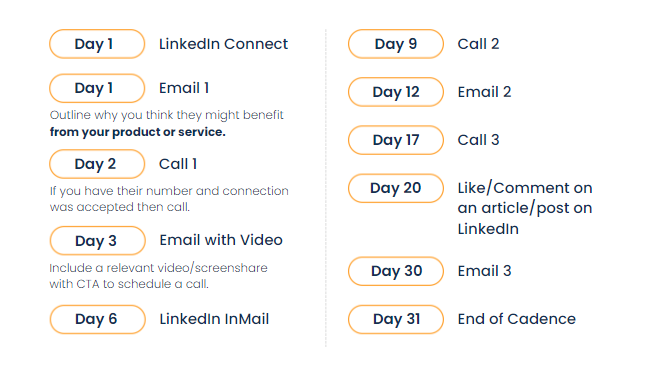
Five Top Tips for Creating a Prospecting Cadence
- Start Strong: Create a compelling introduction that highlights your understanding of the prospect’s challenges and how your solution can address them.
- Add Value: Share relevant industry-specific content that positions your brand as a reputable information source.
- Build Rapport: Engage with your prospect on LinkedIn and introduce them to your product or service.
- Encourage Action: Conclude each communication with a clear call-to-action, urging the prospect to take the next step.
- Personalise: Tailor the sequence, content, and timing of touchpoints based on the prospect’s behaviour and responses.
4. Guiding Leads with Grace: The ‘Light Touch Prospecting’ Cadence
If your goal is to guide a prospect into becoming a potential lead without overwhelming communication, the ‘Light Touch Prospecting’ cadence is your answer. Designed with a less-aggressive, subtle approach, this cadence delicately balances consistent engagement and respect for your prospect’s space.
Embark on this cadence with an introduction that’s short and sweet. This could be a concise email or a brief call where you introduce your organisation and services. Rather than pushing for a hard sell, aim to pique their curiosity. Highlight your understanding of their industry and subtly hint at how your solution could be beneficial.
Continue with a series of thoughtfully timed touchpoints, providing valuable resources that align with their interests. This could range from industry-specific insights, whitepapers, blog articles, to case studies. The goal is to offer relevant information and demonstrate your expertise without becoming overwhelming.
The objective of the ‘Light Touch Prospecting’ cadence is to gently nudge the prospect further in their buying journey, converting them into a lead with respect and subtlety. This strategic, non-intrusive approach can often foster stronger, more meaningful customer relationships.
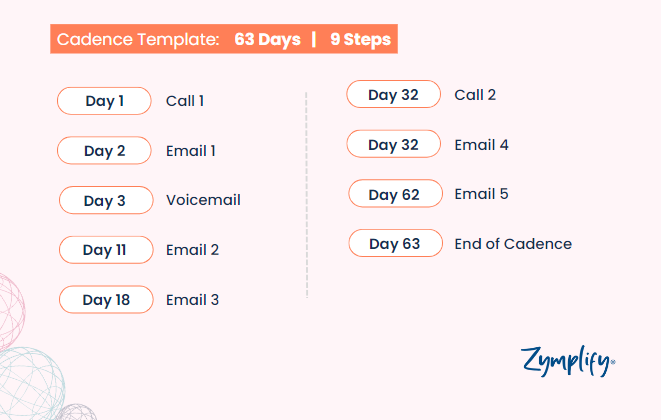
Five Top Tips for Creating a Light Touch Prospecting Cadence
- Craft a Concise Introduction: Begin with a succinct email or call, introducing your organisation and services.
- Pique Curiosity, Not Pressure: Avoid hard selling. Instead, aim to pique their interest and subtly hint at how your solution could help them.
- Time Your Touchpoints: Follow up with a series of thoughtfully timed touchpoints, providing valuable resources that resonate with your prospect.
- Provide Valuable Insights: Share relevant industry-specific insights, whitepapers, blog articles, or case studies to showcase your expertise.
- Gentle Guidance: Remember, the goal is to gently guide your prospect further in their buying journey, fostering stronger customer relationships.
The Zymplify Approach to Sales Cadences
Zymplify uses this cadence structure to seamlessly convert new intent prospects onto a fully automated email sequence.
Based on a successful link click, prospects are moved automatically onto the second phase, with more in depth sales touchpoint activities with the aim to get a positive conversation. From here it’s onto the Phase 3 Cadence structure, to convert them onto a demo.
Among the various engagement signals, email replies are one of the most important as they demonstrate a high level of intent. Zymplify’s AI can analyse responses, classify intent, and automate appropriate next steps. Plus, with the power of generative AI you can streamline sales outreach creation, distribution, and management. Create dynamic and customised sales cadences containing emails, phone scripts, and LinkedIn messages, in seconds. All tailored to your product or service and target persona.
Conclusion
In conclusion, adopting a strategic and focused sales cadence approach as outlined in this guide, is a cornerstone to maximising your sales engagement and driving revenue growth, at scale.
Sales cadences offer a dynamic way to automate sales communications, personalise interaction, and engage with prospects meaningfully across multiple channels. Core to the success of sales cadences is their blend of consistency, focus, and scalability. Developing a tailored outreach based on real-time intent data, you can ensure that your messages resonate with your prospects at every stage of their buyer journey.
This blog has equipped you with four key cadence templates, crafted to help you navigate through different prospect scenarios effectively. Remember, it’s not just about implementing sales cadences, but about refining and optimising them as per your prospects’ responses and behaviour patterns. Embrace Zymplify’s Sales Cadences to unlock the power of automated outreach and witness a transformation in your prospect engagement and conversion rates.
